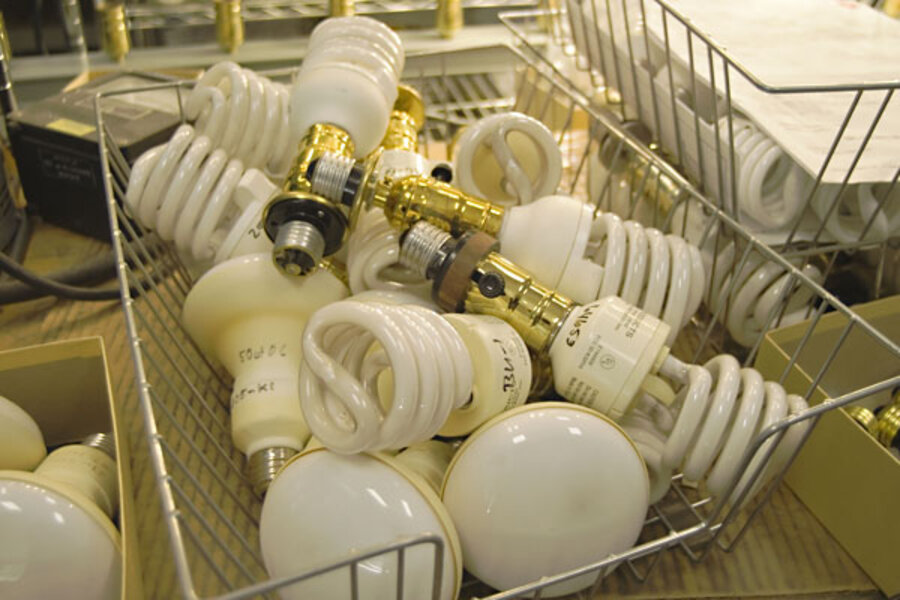Are energy-efficient light bulbs really worth it?
Saving Pennies or Dollars is a new semi-regular series on The Simple Dollar, inspired by a great discussion on The Simple Dollar’s Facebook page concerning frugal tactics that might not really save that much money. I’m going to take some of the scenarios described by the readers there and try to break down the numbers to see if the savings is really worth the time invested.
Greg writes in: I was thinking of changing my light bulbs to the new energy efficient CFL bulbs. I counted quantity 14 60watt bulbs in my house. For $25 to buy an 18 pack of 60watt equivalent, each bulb uses 13watts. If I estimate that roughly everyday 4 bulbs are turned on for 5 hours. Saving me 188 Watts of power per hour, giving me 940 watts saving a day. Is it worth it?
It absolutely is.
Let’s do a price comparison of normal incandescent bulbs, CFL bulbs, and the new LED bulbs that are starting to emerge onto the scene, using Greg’s scenario.
Greg can buy a 24 pack of 60 watt incandescent bulbs for $11.87, or $0.49 a bulb. He would have to buy twelve bulbs to replace the ones in his home, costing him $5.94 in bulbs. These bulbs have an average lifetime of 1,000 hours, so to cover 10,000 hours of use, it will cost him $54.90 to use incandescent bulbs.
Greg can also buy an 8 pack of 13 watt CFL bulbs for $8.75 (which replace 60 watt incandescents), or $1.09 a bulb. He would have to buy twelve bulbs to replace the ones in his home, costing him $13.08 for a round of bulbs. These bulbs have a stated average lifetime of 8,000 hours, but my experience with CFLs has shown me that you should roughly halve that, so to cover 10,000 hours of use, it will cost him $32.70.
Yes, even without the energy savings, CFLs are cheaper due to the longer lifespan.
Greg could also buy a single 7 watt warm white LED bulb for $14.99 (this replaces a 60 watt incandescent). I’ve used these and they actually do a really good job of matching incandescent light. He would have to buy twelve bulbs to replace the ones in his home, costing him $179.88. These bulbs have a stated average lifetime of 25,000 hours, so to cover 10,000 hours of use, it will cost him $71.95.
So, for 10,000 hours of light out of twelve light sockets, you’ll have to pay $54.90 for 60 watt incandescent bulbs, $32.70 for equivalent CFLs, and $71.95 for equivalent LEDs.
Now, what about energy use?
Over 120,000 hours of use (10,000 hours per socket), a 60 watt incandescent will use 7,200 kWh of energy. At an average price per kilowatt hour nationwide of about $0.12 per kWh, it would cost him $864 over that span.
Over that same timeframe, a 13 watt CFL will use 1,560 kWh of energy. At a price of $0.12 per kWh, it would cost him $187.20 over that span.
Over that timeframe, a 7 watt CFL will use 840 kWh of energy. At a price of $0.12 per kWh, it would cost him $100.80 over that span.
So, what’s the total cost?
For 12 light sockets over 10,000 hours of use per socket, the total cost of using 60 watt incandescent bulbs is $918.90.
For 12 light sockets over 10,000 hours of use per socket, the total cost of using 13 watt CFLs (which produce light similar to the 60 watt incandescents) is $219.90.
For 12 light sockets over 10,000 hours of use per socket, the total cost of using 7 watt LEDs (which produce light similar to the 60 watt incandescents) is $172.75.
Yes, LEDs are the cheapest option now. The startup cost for such bulbs is very high, but their long lifespans and incredibly low energy use end up making up the difference and more.
On the other hand, even though they’re the cheapest initially, the short lifespan and high energy cost of incandescent bulbs make them incredibly expensive over the long haul.
My suggestion? Try a CFL and a good LED like the one I linked to above. Make sure the lighting is up to the standard you want. If it is, you should absolutely jump ship to the one that provides the light you want, even if the bulb costs more. You’ll save dollars, not pennies, over the long run.





